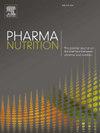Potential health benefits of olive oil polyphenols in metabolic disorders management
IF 2.4
Q3 NUTRITION & DIETETICS
引用次数: 0
Abstract
Background
The protective effects of olive oil (OO) on metabolic health. Current research aims to elucidate the positive impacts of OO on emerging factors linked to metabolic diseases such as metabolic syndrome, obesity, and type 2 diabetes. These factors encompass inflammation, oxidative stress, platelet aggregation, coagulation, endothelial function, and lipid profile.
Methods
A comprehensive literature search was conducted using various electronic databases, including PubMed, Google Scholar, Scopus, and Web of Science, using the following keywords and combined synonyms: (”extra virgin olive oil”; ”virgin olive oil”; “metabolic syndrome”; “ type 2 diabetes”; ”diabetes mellitus”; “ obesity”; “atherosclerosis”; “Olive oil phenolic compounds”; “Olive oil polyphenols”; “ antioxidant activity”; and “Anti-inflammatory activity”).
Conclusion
Multiple studies have demonstrated that a diet rich in OO can aid in preventing atherosclerosis primarily by enhancing lipid profile. These favourable effects of OO are mainly ascribed to its abundance of phenolic compounds (PCs). Therefore, the bioactivity of olive oil phenolic compounds (OOPCs) could be related to various pharmacological characteristics such as antioxidant, anti-inflammatory, antimicrobial, anti-atherogenic, antithrombotic, antimutagenic, and hypoglycemic properties. Hydroxytyrosol (HT), tyrosol (Tr), Oleuropein (OLP), Oleocanthal (OLC), and Oleacein (OLE) are the PCs mainly involved in the antioxidant and anti-inflammatory activities. This review focuses on appraising the current knowledge on the effect of OO, particularly its PCs, on metabolic diseases and discussing the underlying mechanism by which it exerts its effect.
橄榄油多酚在代谢紊乱管理中的潜在健康益处
橄榄油对代谢健康的保护作用。目前的研究旨在阐明OO对代谢综合征、肥胖和2型糖尿病等代谢性疾病相关新因素的积极影响。这些因素包括炎症、氧化应激、血小板聚集、凝血、内皮功能和血脂。方法利用PubMed、谷歌Scholar、Scopus、Web of Science等多家电子数据库进行综合文献检索,检索关键词为“特级初榨橄榄油”;“初榨橄榄油”;“代谢综合症”;“2型糖尿病”;“糖尿病”;“肥胖”;“动脉粥样硬化”;“橄榄油酚类化合物”;“橄榄油多酚”;“抗氧化活性”;和“抗炎活性”)。结论多项研究表明,富含OO的饮食主要通过提高血脂水平来预防动脉粥样硬化。OO的这些有利作用主要归因于其丰富的酚类化合物(PCs)。因此,橄榄油酚类化合物(OOPCs)的生物活性可能与多种药理特性有关,如抗氧化、抗炎、抗菌、抗动脉粥样硬化、抗血栓形成、抗诱变和降血糖等特性。羟基酪醇(HT)、酪醇(Tr)、橄榄苦苷(OLP)、油橄榄醇(OLC)和油橄榄醇(OLE)是主要参与抗氧化和抗炎活性的pc。这篇综述的重点是评价目前关于OO,特别是其pc对代谢性疾病的作用的知识,并讨论其发挥作用的潜在机制。
本文章由计算机程序翻译,如有差异,请以英文原文为准。
求助全文
约1分钟内获得全文
求助全文
来源期刊

PharmaNutrition
Agricultural and Biological Sciences-Food Science
CiteScore
5.70
自引率
3.10%
发文量
33
审稿时长
12 days
 求助内容:
求助内容: 应助结果提醒方式:
应助结果提醒方式:


